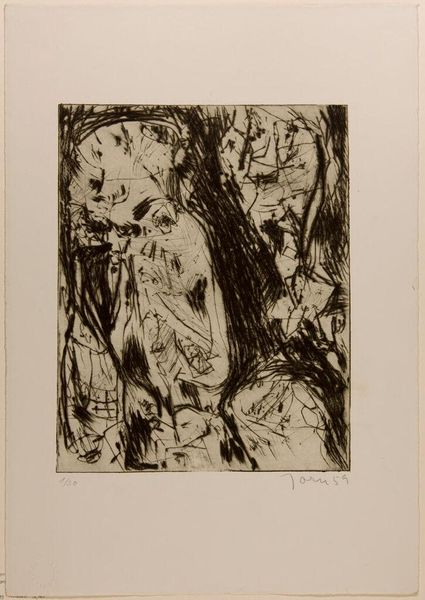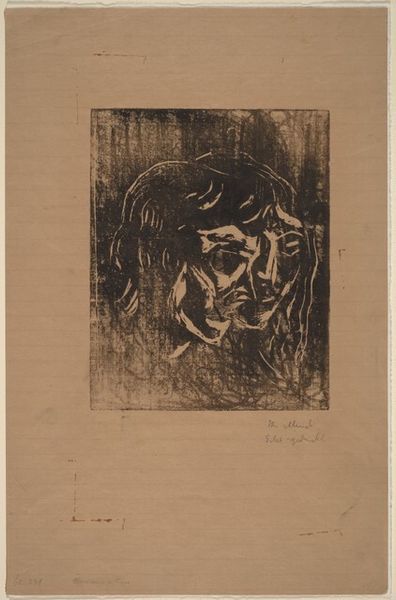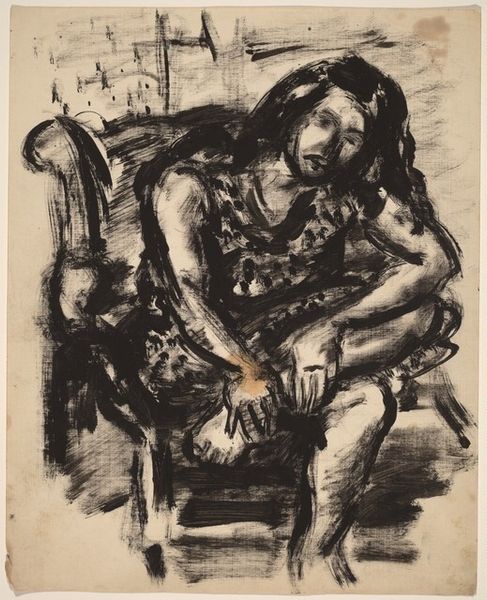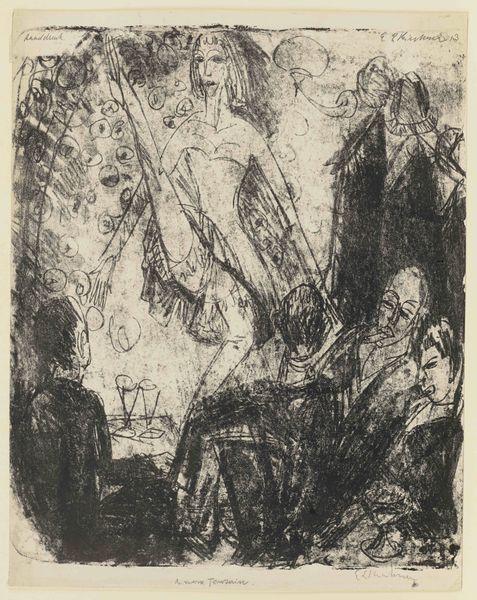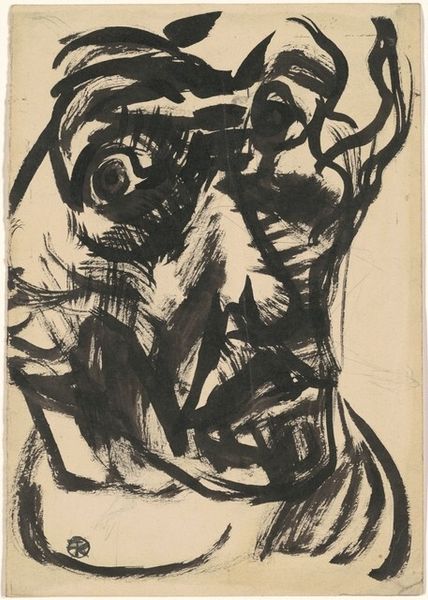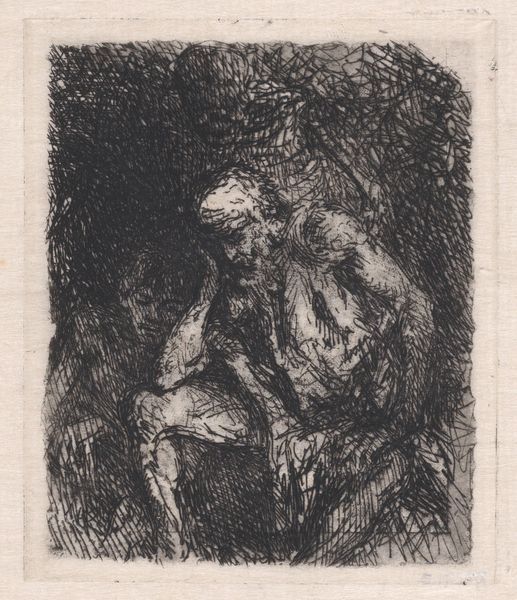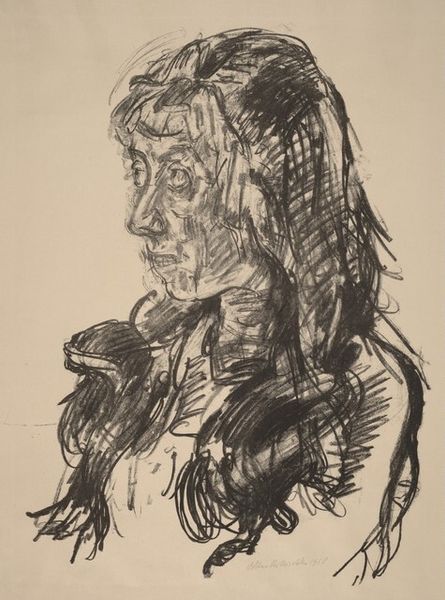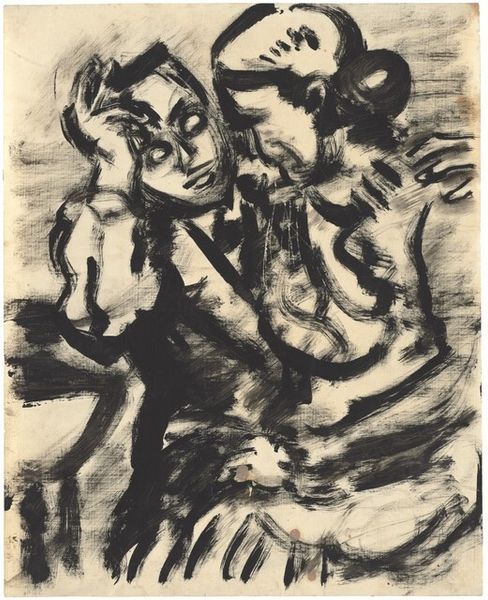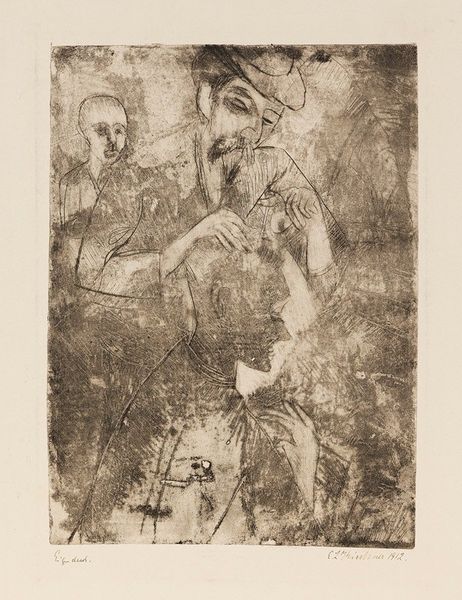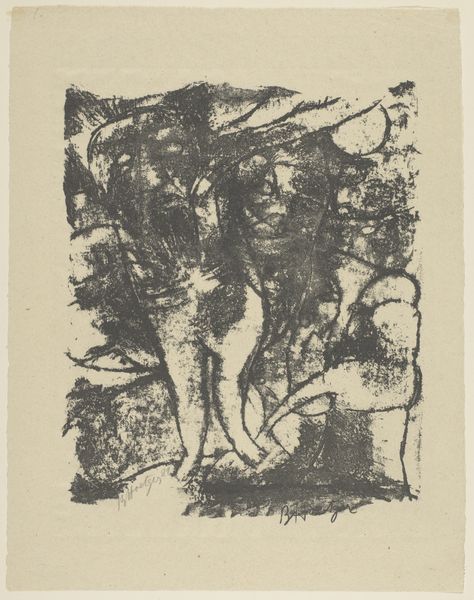
drawing, print, etching, ink
#
portrait
#
drawing
#
ink drawing
# print
#
etching
#
figuration
#
ink
#
line
Dimensions: Image: 186 x 166 mm Sheet: 300 x 259 mm
Copyright: National Gallery of Art: CC0 1.0
Curator: Looking at "Mujer Con Fruta," or "Woman with Fruit," a 1940 ink etching by Robert Mallary, the first thing that strikes me is the stark contrast created by the use of such strong lines. The woman seems almost burdened. What is your initial take? Editor: My eye is immediately drawn to the fruit she carries, an offering or perhaps a symbol of the abundance and toil. It’s a potent image, raw and unfinished, which is fitting considering its historical context. Curator: Absolutely. The woman's pose certainly evokes the Madonna figure, and this representation intersects interestingly with social upheaval of that time, particularly the changing role of women during and after World War II. Does it speak to the feminine ideal and the realities experienced in a war-torn world? Editor: Undoubtedly, that resonance is definitely there. Notice the formal qualities, the ink is almost crudely applied but still represents fruit. One almost glimpses pre-Christian cornucopia imagery or classical symbols of fertility. There’s an earthy quality combined with, as you say, that modern religious evocation, especially through the dark swirling inks in the woman's core. Curator: And we must think, what is Mallary trying to say about women specifically with the line style of the drawing? Considering her expression, is she struggling or standing powerfully defiant? What can we know about women’s economic position during that time? The etching suggests the heavy weight carried on her shoulders and within her personhood, does it not? Editor: Yes, that’s exactly the feeling it conveys. I mean, is she exhausted by harvest or weighed down by something deeper, something cultural? Mallary presents us with this tension without offering a concrete answer. But consider also how women become powerful symbols during times of conflict – representations of home and resilience that societies depend on and revere in specific, arguably contradictory, ways. Curator: So, looking closely at "Mujer Con Fruta", we uncover not just the aesthetic, but layers of symbolic and historical context concerning gender roles. Editor: And discover that Robert Mallary prompts reflection on the role and weight of representation of women within both the cultural narratives, and our own understandings, across time.
Comments
No comments
Be the first to comment and join the conversation on the ultimate creative platform.
